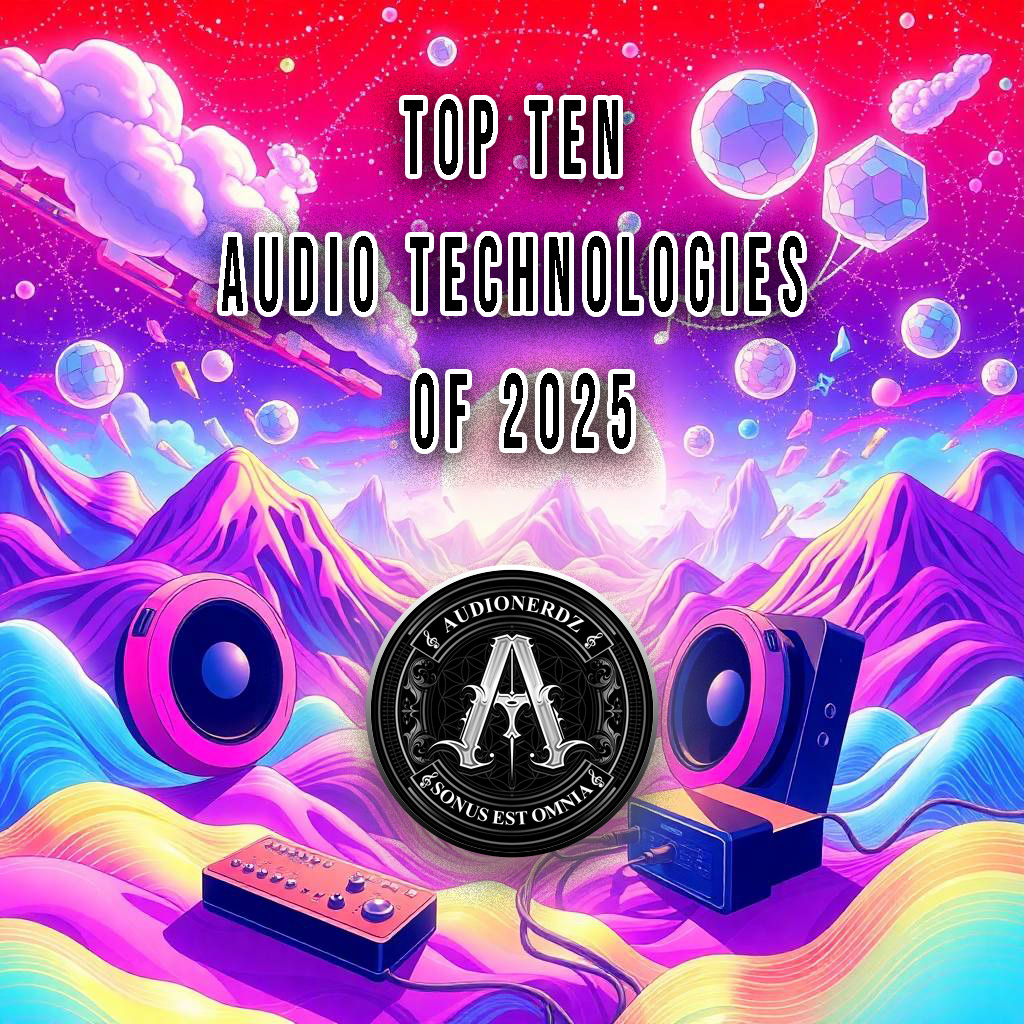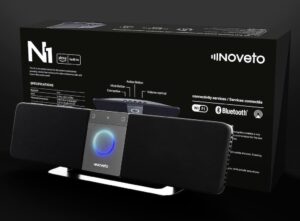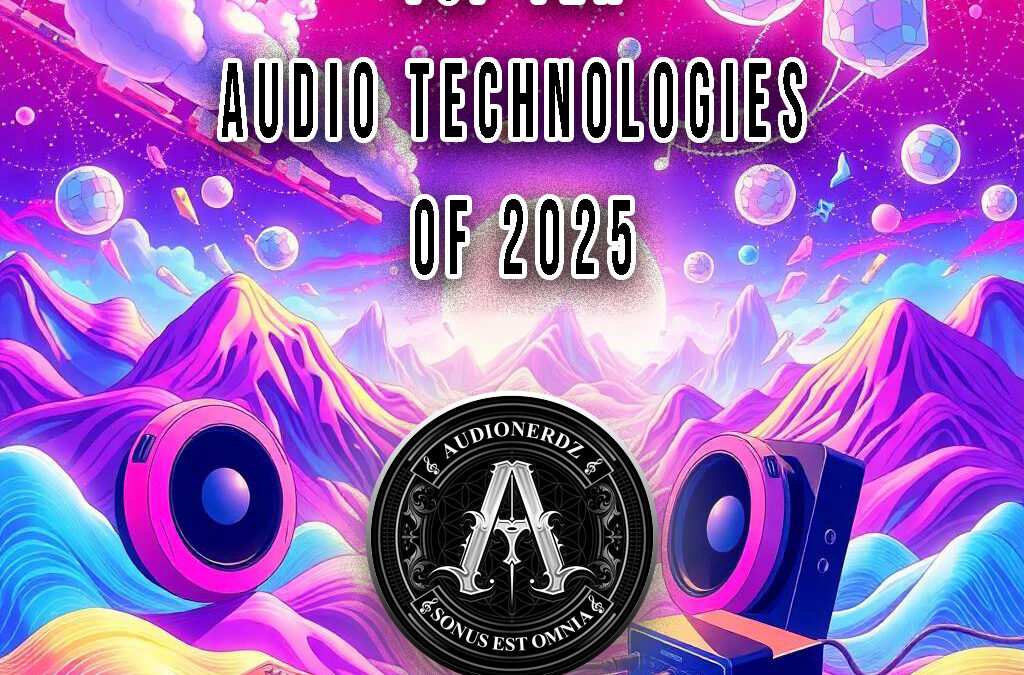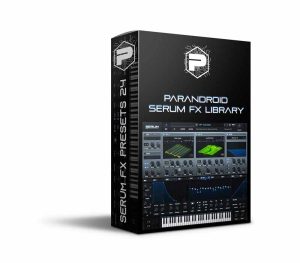TOP TEN AUDIO TECHNOLOGIES 2025
A Roundup of what is hot in 2k25Discover the top 10 groundbreaking audio technologies that are revolutionizing the way we experience sound. From immersive 3D audio to AI-driven personalization and advancements in wireless audio, these innovations are reshaping the audio industry and offering richer, more personalized, and immersive listening experiences. Explore the future of sound with us!

Emerging Audio Technologies: Shaping the Future of Sound
The audio industry is experiencing a renaissance, with innovations transforming how we create, consume, and interact with sound. From immersive experiences to AI-driven personalization, here are some of the most groundbreaking developments shaping the future of audio.
1. Immersive Audio Experiences
Immersive audio technologies, such as spatial audio and 3D sound, are revolutionizing how we perceive and interact with audio content. By simulating a multi-dimensional sound environment, these technologies provide listeners with a more engaging and lifelike experience. For instance, platforms like Dolby Atmos and DTS:X enable content creators to position audio elements in a three-dimensional space, enhancing the depth and realism of soundtracks and sound design.
2. AI-Driven Personalization
 Artificial Intelligence (AI) is playing a pivotal role in personalizing audio experiences. Streaming services and music platforms utilize AI algorithms to analyze user preferences and listening habits, curating personalized playlists and recommendations. Moreover, AI-powered tools assist artists and producers in music creation, offering features like automated mixing, mastering, and sound design, thereby streamlining the production process and fostering creativity.
Artificial Intelligence (AI) is playing a pivotal role in personalizing audio experiences. Streaming services and music platforms utilize AI algorithms to analyze user preferences and listening habits, curating personalized playlists and recommendations. Moreover, AI-powered tools assist artists and producers in music creation, offering features like automated mixing, mastering, and sound design, thereby streamlining the production process and fostering creativity.
3. Advancements in Wireless Audio
The evolution of wireless audio technologies is enhancing convenience and flexibility for users. Bluetooth LE Audio, for example, offers improved audio quality, lower latency, and the ability to broadcast audio to multiple devices simultaneously. This advancement facilitates shared listening experiences in public spaces and supports the development of new applications, such as personal audio hotspots in venues like gyms, airports, and stadiums.
4. Integration of AI in Hearables
The integration of AI into hearables—smart earbuds and headphones—is transforming personal audio devices. Researchers are developing wireless hearables equipped with programmable speech AI accelerators, enabling real-time speech enhancement and noise suppression directly on the device. This technology enhances call quality and listening experiences, particularly in noisy environments, by processing audio locally and efficiently.
5. In-Car Audio Innovations
Automotive manufacturers are increasingly focusing on enhancing in-car audio systems to improve the driving experience. Collaborations between companies like Texas Instruments and automotive brands have led to the development of advanced audio technologies, such as immersive sound systems and personalized audio profiles. These innovations aim to deliver high-fidelity sound and customizable audio settings, catering to individual preferences and elevating the overall in-car environment.
6. AI and Machine Learning in Audio Production
AI and Machine Learning (ML) are revolutionizing audio production by automating complex tasks and introducing new creative possibilities. From real-time audio processing to predictive analytics, these technologies enable producers and sound engineers to optimize workflows, enhance audio quality, and explore innovative soundscapes. The integration of AI and ML in audio production signifies a shift towards more efficient and creative processes in the industry.
7. Augmented Orchestra: Blending Live Performance with Technology
The Augmented Orchestra is an innovative concept that applies real-time audio processing to live orchestral performances, expanding the sonic possibilities of traditional ensembles. Developed by composer Anna Clyne and sound designer Jody Elff, this technology integrates electronic elements with acoustic instruments, creating a hybrid performance that offers audiences a unique and immersive musical experience.
8. Sonic Branding Beyond the Logo
Sonic branding is evolving beyond simple audio logos to encompass comprehensive audio identities that reflect a brand’s ethos and engage consumers across various touchpoints. This trend involves creating consistent and recognizable sound elements that enhance brand recall and emotional connection, utilizing technologies like AI-driven personalization to tailor audio experiences to individual preferences.
9. Neuromorphic Computing in Audio Classification
Neuromorphic computing, inspired by the human brain’s architecture, is being applied to audio classification tasks. This approach offers energy-efficient and real-time processing capabilities, making it suitable for applications like surveillance, healthcare monitoring, and environmental analysis. By emulating neural structures, neuromorphic systems can process complex audio patterns effectively, paving the way for advanced auditory processing technologies.
10. The Rise of AI-Enhanced Audiobooks
The audiobook industry is embracing AI to enhance content creation and personalization. AI-driven tools enable dynamic narration adjustments, such as altering tone, pace, and emotion, to suit different genres and listener preferences. This technology enriches the storytelling experience, making audiobooks more engaging and tailored to individual tastes.
These developments underscore a dynamic and rapidly evolving audio landscape, where technology and creativity converge to offer richer, more personalized, and immersive auditory experiences. As these innovations continue to mature, they hold the potential to redefine how we interact with sound in our daily lives.





